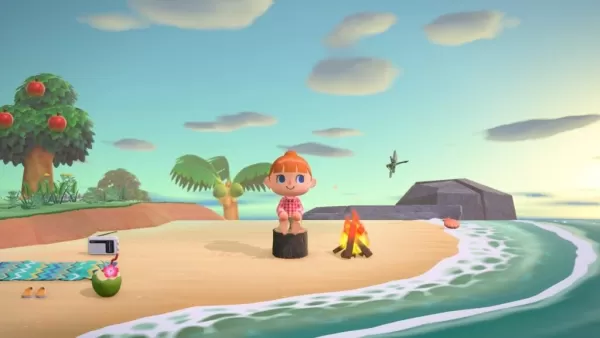What do you imagine when you think of Animal Crossing? Likely, soft-colored furniture, snug wooden cabins, vibrant gardens, and friendly animal neighbors carrying fruit in their baskets come to mind.
But it's more than a charming life simulator; it became the foundational design for a lifestyle trend that captivated the internet. We're talking, of course, about cottagecore.
We've partnered with Eneba to explore how a niche aesthetic born on Tumblr grew into a worldwide phenomenon—and how Animal Crossing: New Horizons acted as the catalyst that brought it into the mainstream.
When Gameplay Meets Aesthetic Movements
Cottagecore is all about embracing a slower, simpler, nature-focused way of living. Imagine baking fresh bread in a country-style kitchen, caring for your vegetable garden, or relaxing with a book beneath a shady tree. It's an escape from modern pressures, and Animal Crossing offered a digital way for players to embrace that dream.
In fact, one reason cottagecore exploded in popularity is that the game gave it an interactive dimension. Your island became a cottagecore canvas, decorated with log furniture, blooming meadows, and gentle lighting, making every screenshot look like it was pulled from a storybook.
For many players, this experience extended beyond the game. They started looking for other games similar to Animal Crossing to recreate that same nature-filled, cozy escape elsewhere.
Escapism in Its Purest Form

The game's timing was perfect. Launched in March 2020, New Horizons arrived just as the world went into lockdown. While people were confined indoors, the game presented open beaches, peaceful rivers, and sprawling wildflower fields. Creating a digital cottage wasn't just a hobby; it was a form of therapy.
The cottagecore trend thrived because Animal Crossing didn't just promote creativity—it encouraged moments of calm. Whether harvesting fruit or arranging garden benches, the pace was thoughtful, deliberate, and soothing. This wasn't merely a game; it was a way to restore a sense of control during a time of real-world uncertainty.
Fashion, Social Media, and Virtual Trends Collide
Cottagecore's influence extended beyond the Nintendo Switch. It took over TikTok and Instagram, with flowy dresses, chunky knit sweaters, and earth-toned palettes filling up social feeds.
Influencers and players designed their islands to serve as perfect backdrops for photos, and soon cottagecore wasn't just a niche interest—it was everywhere.
What solidified its appeal was how Animal Crossing blurred the lines between in-game and real-world creativity. Players weren't just designing virtual spaces. They took up baking, flower pressing, and DIY projects inspired by their islands. The game had become a lifestyle reference point.
More Than Just Cute Pixels
While cottagecore may appear to be purely an aesthetic trend, it addresses a deeper human need. People long for belonging, tranquility, and a connection to the natural world—something often missing from our fast-paced, digitally saturated lives. Animal Crossing captured that longing perfectly. Its blend of farming, crafting, and community mirrored the ideals of cottagecore, turning it into more than just a temporary fad.
Years on, cottagecore continues to flourish across gaming, fashion, and online culture—and much of that staying power can be traced back to the cultural footprint of Animal Crossing. It demonstrated that video games can go beyond entertainment: they can inspire real-life changes, define trends, and reshape our very idea of "cozy" in the modern age.






